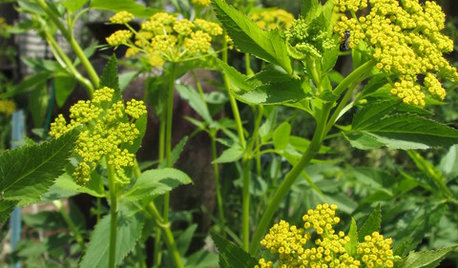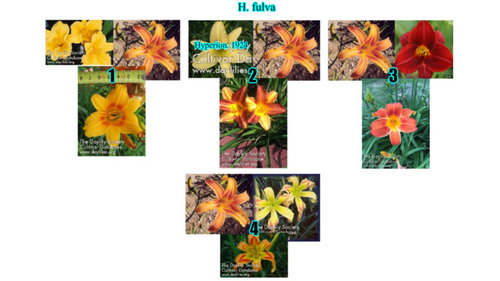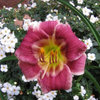Thought I'd share some of my research, I find the evolution of the daylily fascinating,
How to read the pics:
Parents are directly above, and the resulting registered offspring of the parents is directly below them.
The pod parent is always the first picture, or upper left ones.
If you can't see the images good, right click it, then select "view image" you can then zoom in and out by pressing Ctrl+"+" on your keyboard, and Ctrl+"-"
First up are some examples of the resulting offspring of "Stella De Oro"
The resulting pinks I found rather interesting, especially in #12, and the bicolor on #3 is pretty cool.In the case of Stella De Oro, I believe the hybridizers used it to extend early bloomers, and rebloom genes and in many cases they did just that. In some of the cases the other parent was a late bloomer and they quite possibly wanted the traits of Stella De Oro.
Next up, some of the resulting offspring of H.Fulva (common ditch lily) and it's variants.
Ok so a lot of people think H. Fulva is sterile, and that could be true for some variants, however there is a lot of registered cultivars, from hybridizers like "Stelter" I've also found that a lot of "Stout's" and "Traub's" early work may of came from breakthroughs with H.Fulva and variants,Hankow for instance. Make of it as you will.
#1 is pretty interesting, the hybridizer was able to extend the high branching and bud count that's associated with H. Fulva, whilst keeping the early bloom of Stella De Oro. Another thing I found very interesting on #1 was the lipstick imprint, and you can really see the evolution of it.
#2 is really fascinating, the cross was done in 2011ish using Hyperion(1924) which is another old strain. To me, it's like a recreation of some of the earlier works of hybridizers like Stout. In fact, if you look at some of the early cultivars, #2 is very similar to what was around at the time. It's like looking in a time capsule and seeing the evolution of the first bicolors in it's early form, Boutonniere, or Bold Courtier for instance.
Another thing that is quite fascinating, is the introduction of the Tetraploid, it's something I haven't been able to quite track down yet, and what exact cross made the modern daylillies an interspecific hybrid. I'd like to think it's something from Xanthorrhoeaceae, which is in the same family, or even something from Hemerocallidoideae, which is in the subfamily.
Here's a few shots of a cross and how many different variants can come from the same parents. Wish I could find more like these.










Ed
Related Discussions
Garden Metamorphosis & Evolution
Q
Those PLEASING "P" & "Q" daylilies
Q
More pics
Q
More FFO's on Saturday
Q